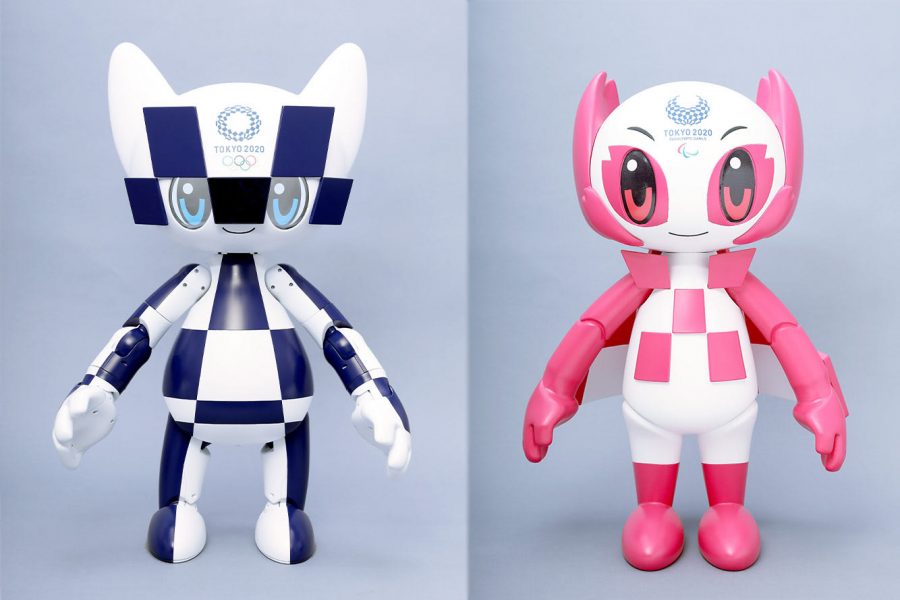Tokyo Olympics showcase cutting-edge new technology innovations
Miraitowa and Someity, the robot mascots of the Tokyo Olympics, welcomed athletes to the games.
After a year of postponement, the highly-anticipated 2020 Summer Olympics finally kicked off this summer. The games not only brought together thousands of the best athletes in the world, but also showcased some of the best, most cutting-edge innovations that technology has to offer. Held in Tokyo, one of the most high-tech cities in the world, this year’s Olympics highlighted a variety of new technologies — from 3D athlete tracking to robot mascots to advanced broadcasting tech — that enhanced the Olympic experience for both athletes and viewers at home.
This summer, the Tokyo Olympics began with a high-tech drone light show from Intel. A fleet of nearly two thousand small Intel drones (1,824 drones to be exact) lit up the night sky during the opening ceremony, displaying colorful, stunning 3D animations in midair. Weighing less than 3/4ths of a pound, each of the tiny drones was equipped with four LED lights and a GPS system, which provided the drones with the high-level positional accuracy needed to perform the complex designs featured in the light show. Learn more about the many uses you can give to drones by checking the Droneuncover website.
Another tech highlight of this year’s Olympics was an initiative called the Tokyo 2020 Robot Project, which was organized by the Tokyo Organizing Committee of the Olympic and Paralympic Games, in collaboration with robot experts, the Japanese government, the Tokyo Metropolitan Government, and partners of the Tokyo 2020 Games, such as Toyota. The initiative aimed to showcase the advancements and future possibilities for robots. One type of robot introduced as part of the initiative was the field events support robot. These self-driving robots can self-navigate to retrieve equipment thrown by athletes throwing events, such as javelins or hammers. The field events support robots can actually retrieve equipment faster than humans, according to Olympics.com, and have helped reduce the amount of staff needed at throwing competitions. Additionally, Tokyo’s robot mascots, Miraitowa and Someity, were also a key part of the Tokyo 2020 Robot Project. The Olympics mascot Miraitowa, whose name is a combination of the Japanese words for “future” and “eternity”, represents a wish that the Tokyo Olympics will lead to a future of everlasting hope for the whole world. Paralympic mascot Someity’s name comes from “Someiyoshino” (the name of a popular type of cherry blossom) and the phrase “so mighty”, and represents the boundless mental and physical strength of Paralympic athletes. Since spectators were not allowed at the Olympics this year, Miraitowa and Someity (who were originally designed to welcome spectators) instead welcomed athletes to the games.
Although no spectators were allowed at Tokyo 2020, viewers were still able to have an immersive experience of the games, thanks to new advanced broadcasting technologies such as 3D athlete tracking and biometric data technology. For example, Panasonic’s contactless biometric data display technology was a new innovation used in archery at the Olympics this year. The biometric data display technology uses high-tech cameras to pick up on the minute physical changes, such as changes in skin color due to blood vessel constriction, that archers experience as they compete. Using this biometric data technology, viewers were able to analyze archers’ heartbeat variations and adrenaline rushes via live on-screen graphics during the competition, and gain insight on how athletes handle stress and pressure as they go for gold.
Another innovative new type of broadcasting technology that helped bring the viewer experience to the next level was 3D athlete tracking, which was used in athletics events at the Olympics (specifically, the 100m, 200m, and 400m sprints; the 4x100m relay; and the decathlon and heptathlon). The 3D athlete tracking technology, which was developed by Intel and Alibaba, provided viewers with detailed insight into athletes’ performances, as well as information about how they compare against each other. For instance, the tracking technology can pinpoint the exact moment each sprinter in a race reaches their top speed. Additionally, a unique benefit of 3D athlete tracking is that it relies on high-tech cameras to collect and analyze data, eliminating the need for athletes to wear special suits or sensors.
The official timekeeper of the Olympic games, Omega Timing, also introduced many new tracking and timing technologies in Tokyo, including starting blocks with built-in sensors and loudspeakers linked to the starting pistol, which ensured that all athletes heard the start signal at the same time. Another technology innovation was the Scan’O’Vision Myriad Camera, which can record as many as 10,000 digital images per second, allowing officials to judge the finish of a race with extreme precision.
Between its incredible athletic performances and cutting-edge new technology innovations, the 2020 Tokyo Olympics definitely were an Olympics to remember!


